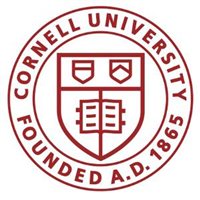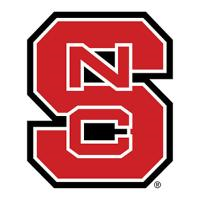What do they do?
Apply geospatial technologies, including geographic information systems (GIS) and Global Positioning System (GPS), to agricultural production or management activities, such as pest scouting, site-specific pesticide application, yield mapping, or variable-rate irrigation. May use computers to develop or analyze maps or remote sensing images to compare physical topography with data on soils, fertilizer, pests, or weather.
Also known as:
Agrintelligence Specialist (Agriculture Intelligence Specialist), Agronomist, Agronomy Consultant, Crop Consultant, Crop Specialist, Precision Agriculture Analyst (Precision Ag Analyst), Precision Agriculture Specialist (Precision Ag Specialist), Precision Agriculture Technician (Precision Ag Tech), Precision Agronomist, Precision Farming Coordinator, Precision Technology Agronomist (Precision Tech Agronomist)
-
0%
Change
Select a state to see its job growth rate rankingJob Openings
Select a state to see its net job growth ranking
-
Cornell University
Ithaca, NY
-
University of North Carolina at Chapel Hill
Chapel Hill, NC
-
Binghamton University
Vestal, NY
-
Stony Brook University
Stony Brook, NY
-
Emory University
Atlanta, GA
Looking for colleges that offer a specific major? Use the College Match Tool to find your best-matched schools and discover your estimated Net Price!
- Doctorate or Professional Degree (1%)
- Master's degree (5%)
- Bachelor's degree (22%)
- Associate's degree (16%)
- Some college, no degree (26%)
- High school diploma equivalent (26%)
- Less than high school diploma (5%)
Most Popular Majors that prepare Precision Agriculture Technicians
-
#1
-
Degrees Granted
79,503
-
Female Students
53,804
-
Male Students
25,699
-
Median Starting Salary
$40,800
-
-
#2
-
Degrees Granted
6,660
-
Female Students
5,528
-
Male Students
1,132
-
Median Starting Salary
$35,800
-
-
#3
-
Degrees Granted
645
-
Female Students
245
-
Male Students
400
-
Median Starting Salary
$45,600
-
-
#4
-
Degrees Granted
470
-
Female Students
196
-
Male Students
274
-
Median Starting Salary
$45,600
-
-
#5
-
Degrees Granted
152
-
Female Students
92
-
Male Students
60
-
Median Starting Salary
$35,800
-
People in this career often have these skills:
- Reading Comprehension - Understanding written sentences and paragraphs in work-related documents.
- Active Listening - Giving full attention to what other people are saying, taking time to understand the points being made, asking questions as appropriate, and not interrupting at inappropriate times.
- Speaking - Talking to others to convey information effectively.
- Critical Thinking - Using logic and reasoning to identify the strengths and weaknesses of alternative solutions, conclusions, or approaches to problems.
- Writing - Communicating effectively in writing as appropriate for the needs of the audience.
- Active Learning - Understanding the implications of new information for both current and future problem-solving and decision-making.
- Complex Problem Solving - Identifying complex problems and reviewing related information to develop and evaluate options and implement solutions.
People in this career often know a lot about:
- Customer and Personal Service - Knowledge of principles and processes for providing customer and personal services. This includes customer needs assessment, meeting quality standards for services, and evaluation of customer satisfaction.
- Computers and Electronics - Knowledge of circuit boards, processors, chips, electronic equipment, and computer hardware and software, including applications and programming.
- Sales and Marketing - Knowledge of principles and methods for showing, promoting, and selling products or services. This includes marketing strategy and tactics, product demonstration, sales techniques, and sales control systems.
- Mathematics - Knowledge of arithmetic, algebra, geometry, calculus, statistics, and their applications.
- English Language - Knowledge of the structure and content of the English language including the meaning and spelling of words, rules of composition, and grammar.
- Engineering and Technology - Knowledge of the practical application of engineering science and technology. This includes applying principles, techniques, procedures, and equipment to the design and production of various goods and services.
- Biology - Knowledge of plant and animal organisms, their tissues, cells, functions, interdependencies, and interactions with each other and the environment.
- Food Production - Knowledge of techniques and equipment for planting, growing, and harvesting food products (both plant and animal) for consumption, including storage/handling techniques.
People in this career often have talent in:
- Deductive Reasoning - The ability to apply general rules to specific problems to produce answers that make sense.
- Inductive Reasoning - The ability to combine pieces of information to form general rules or conclusions (includes finding a relationship among seemingly unrelated events).
- Oral Comprehension - The ability to listen to and understand information and ideas presented through spoken words and sentences.
- Written Comprehension - The ability to read and understand information and ideas presented in writing.
- Oral Expression - The ability to communicate information and ideas in speaking so others will understand.
- Written Expression - The ability to communicate information and ideas in writing so others will understand.
- Near Vision - The ability to see details at close range (within a few feet of the observer).
- Information Ordering - The ability to arrange things or actions in a certain order or pattern according to a specific rule or set of rules (e.g., patterns of numbers, letters, words, pictures, mathematical operations).
- Problem Sensitivity - The ability to tell when something is wrong or is likely to go wrong. It does not involve solving the problem, only recognizing that there is a problem.
People in this career often do these activities:
- Record research or operational data.
- Collect geographical or geological field data.
- Analyze environmental data.
- Calibrate scientific or technical equipment.
- Maintain laboratory or technical equipment.
- Prepare maps.
- Research crop management methods.
- Analyze geological or geographical data.
- Apply knowledge or research findings to address environmental problems.
- Prepare operational reports.
- Advise others on the development or use of new technologies.
- Develop agricultural methods.
- Conduct climatological research.
This page includes data from:

 Occupation statistics: USDOL U.S. Bureau of Labor Statistics Occupational Employment Statistics
Occupation statistics: USDOL U.S. Bureau of Labor Statistics Occupational Employment Statistics









